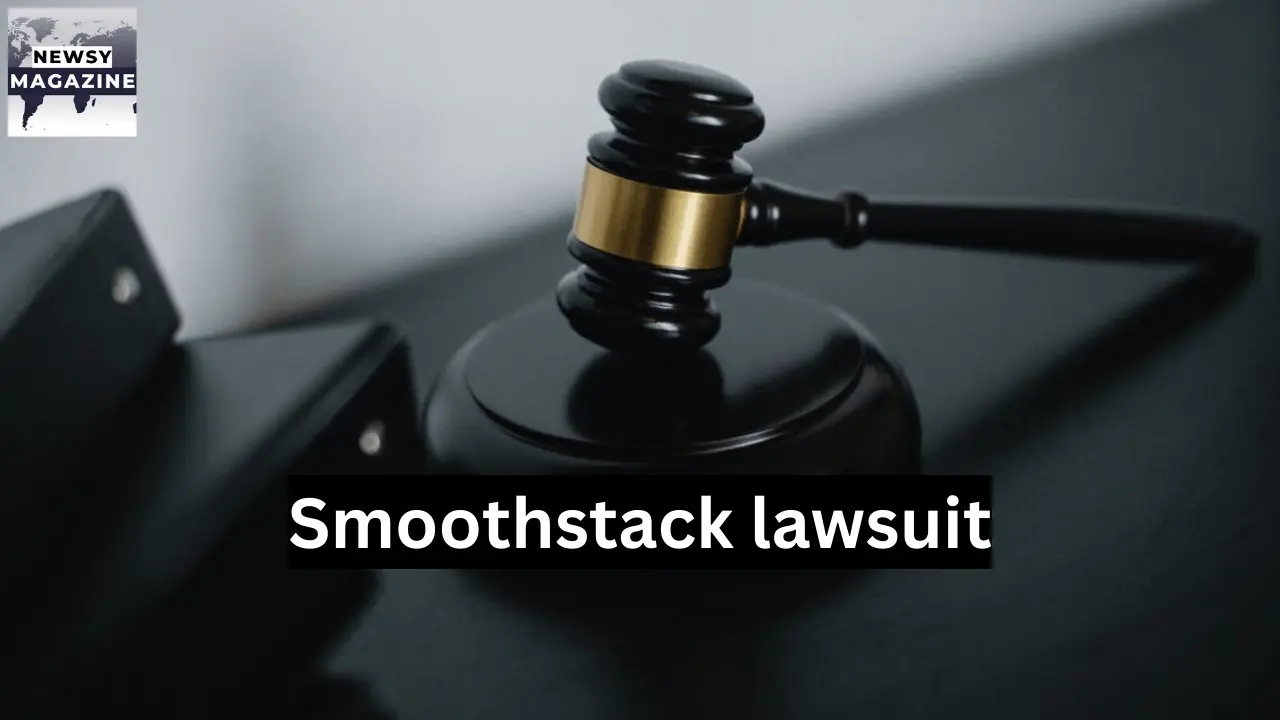
The Smoothstack lawsuit has become a hot topic in the tech world, capturing the attention of both industry insiders and aspiring professionals. As coding boot camps and tech training programs gain popularity, the allegations against Smoothstack have sparked a critical conversation about the ethics and legality of these educational models. For those aiming to break into the tech industry, understanding the nuances of this lawsuit is essential. The outcome could potentially reshape the landscape of tech training, affecting future opportunities and standards.
Imagine investing your time, money, and hopes into a program that promises a lucrative tech career, only to find yourself entangled in legal battles and financial uncertainty. This is the reality facing many former trainees of Smoothstack. In this blog post, we will unpack the details of the lawsuit, examine the key allegations, and explore its broader implications for the tech training industry. Whether you’re considering a tech boot camp or already navigating the field, this comprehensive guide will provide the insights you need to make informed decisions and safeguard your professional future.
Understanding the Smoothstack Lawsuit
The Origins of the Lawsuit
The Smoothstack lawsuit began when several former trainees filed a class-action suit against the company. The plaintiffs alleged that Smoothstack’s training programs did not deliver on their promises and that the company engaged in misleading practices. These allegations include claims that the training was subpar and that the job placements promised were either non-existent or not as described.
Furthermore, the lawsuit accuses Smoothstack of exploiting trainees through unfair contracts. These contracts allegedly locked trainees into extended work periods with lower-than-market wages under the guise of repayment for the training received. This has raised questions about the ethics and legality of such agreements.
Key Allegations and Legal Grounds
The lawsuit hinges on several key allegations. Firstly, there is the claim of deceptive advertising. Plaintiffs argue that Smoothstack misled them about the quality and outcomes of their training programs. Many trainees were reportedly promised high-paying jobs upon completion of the program, only to find themselves in low-paying or unstable positions.
Secondly, the lawsuit addresses the issue of unfair contractual obligations. It is alleged that trainees were required to sign contracts that imposed significant financial penalties if they left the program early or did not fulfill their employment obligations. These contracts are being scrutinized for potentially violating labor laws and regulations regarding fair employment practices.
The Impact on Trainees and the Tech Industry
Personal and Professional Consequences for Trainees
For many trainees, the lawsuit represents more than just a legal battle; it is a personal and professional crisis. Individuals who invested their time and money into Smoothstack’s programs are now faced with uncertain futures. The stress of dealing with legal proceedings, combined with the potential financial fallout, has left many trainees feeling betrayed and disillusioned.
The professional consequences are also significant. Trainees who were promised career advancement and stability are now struggling to find their footing in the competitive tech industry. This has not only impacted their career trajectories but also their confidence in pursuing further opportunities in tech.
Broader Implications for the Tech Training Industry
The Smoothstack lawsuit has broader implications for the tech training industry as a whole. It has sparked a debate about the legitimacy and regulation of coding bootcamps and similar programs. Critics argue that without proper oversight, these programs can exploit vulnerable individuals seeking to break into the tech industry.
The lawsuit has also prompted calls for more stringent regulations and standards for tech training programs. This includes transparency in advertising, fair contractual terms, and accountability for job placement promises. If these measures are implemented, they could lead to a significant overhaul of the industry, ensuring better protection for trainees.
Analyzing the Legal Proceedings
Current Status of the Lawsuit
As of now, the Smoothstack lawsuit is still ongoing. The legal proceedings have entered the discovery phase, where both parties are gathering evidence to support their claims. This phase is crucial, as it will determine the strength of the allegations and the potential outcomes of the case.
Legal experts are closely monitoring the case, as its outcome could set a precedent for similar lawsuits in the future. If the plaintiffs succeed, it could lead to a wave of legal actions against other tech training programs, prompting industry-wide changes.
Potential Outcomes and Their Implications
Several potential outcomes could arise from the Smoothstack lawsuit. If Smoothstack is found guilty of the allegations, they may be required to compensate the plaintiffs for their losses and potentially face fines or other penalties. This could also lead to stricter regulations for the industry, as mentioned earlier.
Alternatively, if Smoothstack successfully defends against the allegations, it could reinforce the current practices of tech training programs. However, this outcome could also prompt further scrutiny and calls for reform, as the issues raised by the lawsuit are unlikely to disappear.
Best Practices for Choosing a Tech Training Program
Research and Due Diligence
Given the uncertainties highlighted by the Smoothstack lawsuit, prospective trainees need to conduct thorough research before enrolling in any tech training program. Start by examining the program’s track record, including graduation rates and job placement statistics. Look for reviews and testimonials from former trainees to gauge their experiences and satisfaction.
It’s also important to investigate the company’s transparency. Are they clear about the costs, the nature of the training, and the realistic outcomes? Beware of programs that make overly optimistic promises without substantiating them with concrete data.
Understanding Contracts and Financial Commitments
Before signing any contract, ensure you fully understand the terms and conditions. This includes financial commitments, such as tuition costs, repayment plans, and any penalties for early termination. If possible, consult with a legal professional to review the contract and identify any potential red flags.
Transparency about job placements is also crucial. Ask the program for detailed information about their job placement process, the types of companies they partner with, and the average salaries of graduates. This will help you make an informed decision and avoid potential pitfalls.
The Future of Tech Training Programs
Trends and Innovations in Tech Education
Despite the controversies, the demand for tech training programs remains high. The industry is evolving, with new trends and innovations emerging to address the challenges highlighted by the Smoothstack lawsuit. For instance, many programs are now offering income share agreements (ISAs), where trainees pay a percentage of their income after securing a job, rather than upfront tuition fees. This model aligns the interests of the program with the success of the trainee.
Additionally, online and hybrid learning models are becoming more prevalent, offering greater flexibility and accessibility. These models allow trainees to balance their education with other commitments, making tech training more inclusive.
The Role of Regulatory Bodies
The Smoothstack lawsuit has underscored the need for regulatory oversight in the tech training industry. Regulatory bodies could play a crucial role in establishing standards and ensuring compliance. This could include accrediting programs that meet certain criteria, and providing a seal of approval that prospective trainees can trust.
Moreover, regulatory bodies could help protect trainees by enforcing transparency in advertising and contractual terms. This would create a safer and more reliable environment for individuals seeking to enter the tech industry through training programs.
Key Takeaways for Aspiring Tech Professionals
Learning from the Smoothstack Case
The Smoothstack lawsuit offers several lessons for aspiring tech professionals. Firstly, it highlights the importance of due diligence. Thoroughly researching a training program and understanding the terms of any agreements can help you avoid potential pitfalls.
Secondly, it underscores the need for realistic expectations. While tech training programs can provide valuable skills and opportunities, they are not guaranteed pathways to high-paying jobs. Understanding this can help you make more informed decisions about your career path.
Moving Forward in Your Tech Career
Despite the challenges highlighted by the lawsuit, there are still numerous opportunities in the tech industry. By choosing reputable training programs, staying informed about industry trends, and continuously developing your skills, you can build a successful and fulfilling tech career.
Networking and seeking mentorship can also play a crucial role in your career development. Engaging with industry professionals and learning from their experiences can provide valuable insights and open doors to new opportunities.
FAQs
What is the Smoothstack lawsuit about?
The Smoothstack lawsuit involves allegations that the company misled trainees about the quality and outcomes of their training programs and imposed unfair contractual obligations. The plaintiffs claim that they were promised high-paying jobs that did not materialize and that they were subjected to financial penalties through unfair contracts.
How does the lawsuit impact the tech training industry?
The lawsuit has raised concerns about the legitimacy and regulation of tech training programs. It has prompted calls for more stringent regulations and standards to protect trainees, including transparency in advertising, fair contractual terms, and accountability for job placement promises.
What should I consider when choosing a tech training program?
When choosing a tech training program, conduct thorough research on the program’s track record, including graduation rates and job placement statistics. Understand the financial commitments and contractual terms before signing any agreements. Transparency about job placements and realistic expectations are also crucial.
What are some trends in tech education?
Trends in tech education include the rise of income share agreements (ISAs), where trainees pay a percentage of their income after securing a job, and the increasing prevalence of online and hybrid learning models, which offer greater flexibility and accessibility.
What role do regulatory bodies play in the tech training industry?
Regulatory bodies can establish standards and ensure compliance in the tech training industry. They can accredit programs that meet certain criteria and enforce transparency in advertising and contractual terms, creating a safer and more reliable environment for trainees.
How can I move forward in my tech career despite the challenges?
To move forward in your tech career, choose reputable training programs, stay informed about industry trends, and continuously develop your skills. Networking and seeking mentorship can also provide valuable insights and open doors to new opportunities.
Also Read: Who is the most famous person in the world?
Conclusion
The Smoothstack lawsuit serves as a crucial reminder of the importance of transparency, fairness, and due diligence in the tech training industry. The allegations against Smoothstack have highlighted significant issues within tech boot camps, from misleading advertising to unfair contractual obligations. As the legal proceedings continue, the tech industry is likely to face increased scrutiny and calls for more stringent regulations. Aspiring tech professionals must be vigilant, thoroughly researching programs, and understanding the terms of any agreements before committing.
Despite the challenges highlighted by the lawsuit, the tech industry remains full of opportunities. By choosing reputable training programs, staying informed about industry trends, and continuously developing your skills, you can build a successful and fulfilling career. Networking and seeking mentorship can provide valuable insights and open doors to new opportunities. As the landscape of tech training evolves, staying proactive and informed will be your best strategy for navigating potential pitfalls and achieving your career goals.







